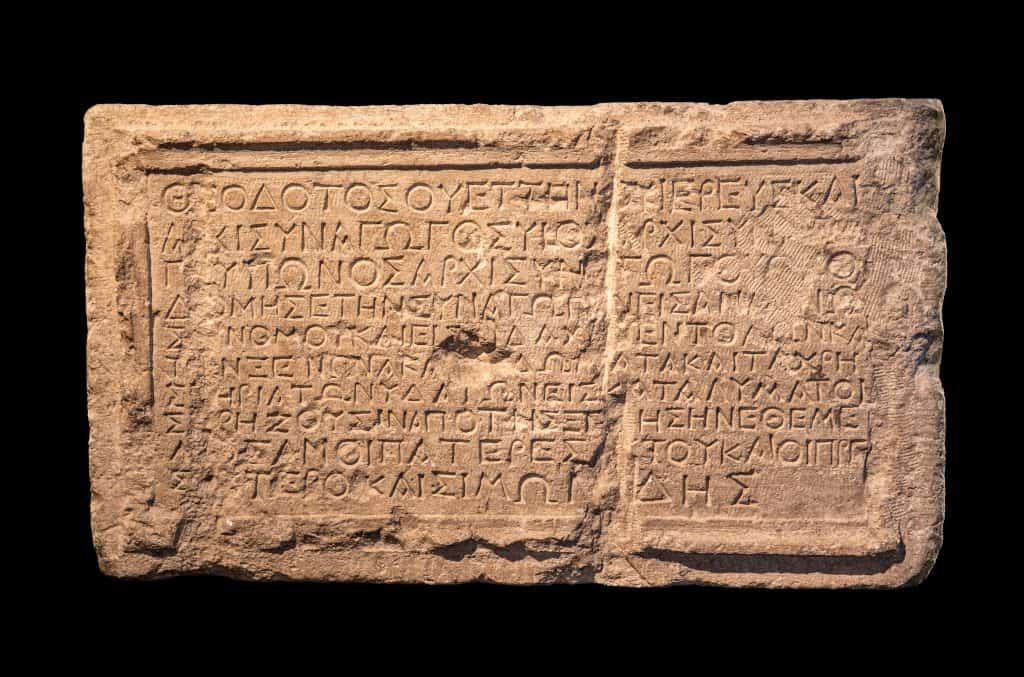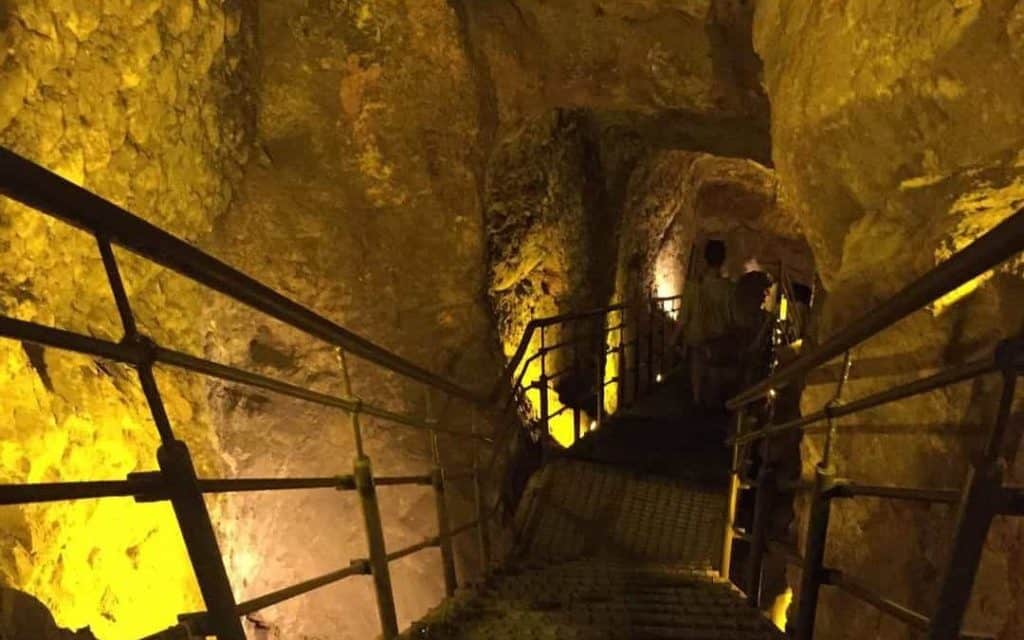Nestled within the bustling streets of modern Jerusalem lies a remarkable relic that transcends time—an ancient inscription known as the Theodotos Inscription. This inscription, engraved into a stone slab, is an invaluable historical artifact that sheds light on the diverse tapestry of Jerusalem’s history, culture, and spirituality.
Ancient Synagogues in Israel

Credit: Andrey Zeigarnik (CC BY-SA 2.0)
Theodotos Inscription – A Message from the Past
So, the Theodotos Inscription dates back to the 1st century CE. The inscription offers a window into the lives and beliefs of the people who inhabited Jerusalem during this pivotal era. Furthermore, the inscription is believed to be connected to a synagogue! Providing insights into the religious and social fabric of the Jewish community in ancient Jerusalem.
Dedication and Faith
The inscription is in Greek and mentions Theodotos, son of Vettenos! According to the find, he built the synagogue to read the Law and teach commandments. This underscores the significance of the synagogue as a place of religious instruction and devotion, where the Jewish community gathered to study and worship.
Israel Museum Tour

A Symbol of Unity
One of the most striking aspects of the Theodotos Inscription is the reference to “God-fearers” or “Foreign Jews” allowed into the synagogue. This highlights Jerusalem’s diverse and cosmopolitan nature during this period. It was a time when people of different backgrounds came together to search for spiritual meaning. The inscription is the only archaeological find from that time that shows the existence of a synagogue in the city!
Theodotos Inscription – Rediscovery and Preservation
Furthermore, the Theodotos Inscription was discovered in 1913 during excavations headed by Raymond Weill in the City of David, a historic site that has yielded numerous archaeological treasures. Today, this precious artifact is on display at the Israel Museum, where visitors worldwide can marvel at its historical significance and the stories it tells.
Exploring the Ancient Jerusalem
So, visiting the Theodotos Inscription at the Israel Museum is a captivating journey through time. It invites you to ponder the lives, beliefs, and aspirations of the people who lived in Jerusalem over two thousand years ago. So, while at the museum, take the opportunity to explore other exhibits that showcase the rich history and cultural heritage of Israel.
City of David
Additionally, consider visiting the City of David, where the inscription was unearthed initially. So, this historic area offers a glimpse into the ancient roots of Jerusalem and is home to ongoing archaeological discoveries that continue to deepen our understanding of this remarkable city’s past.
Private Touring the City of David

Last, the Theodotos Inscription is not merely a stone etching but a bridge connecting us to the people and beliefs of an ancient world. It serves as a reminder of the enduring human quest for spirituality, knowledge, and community! A quest that has left its mark on the stones of Jerusalem for generations to come.







